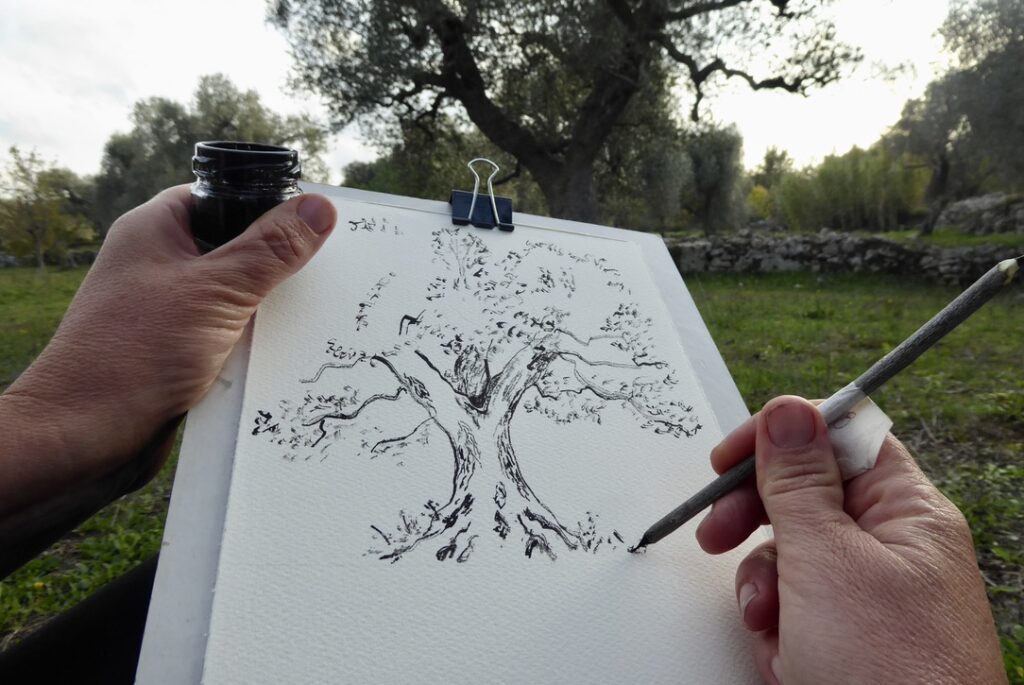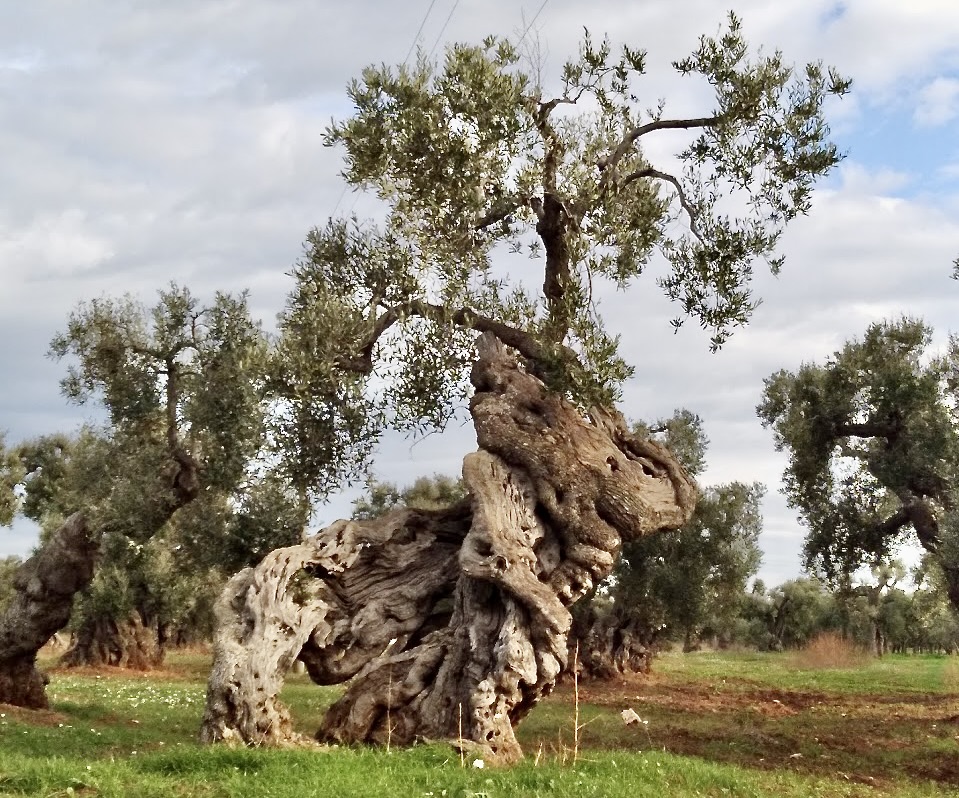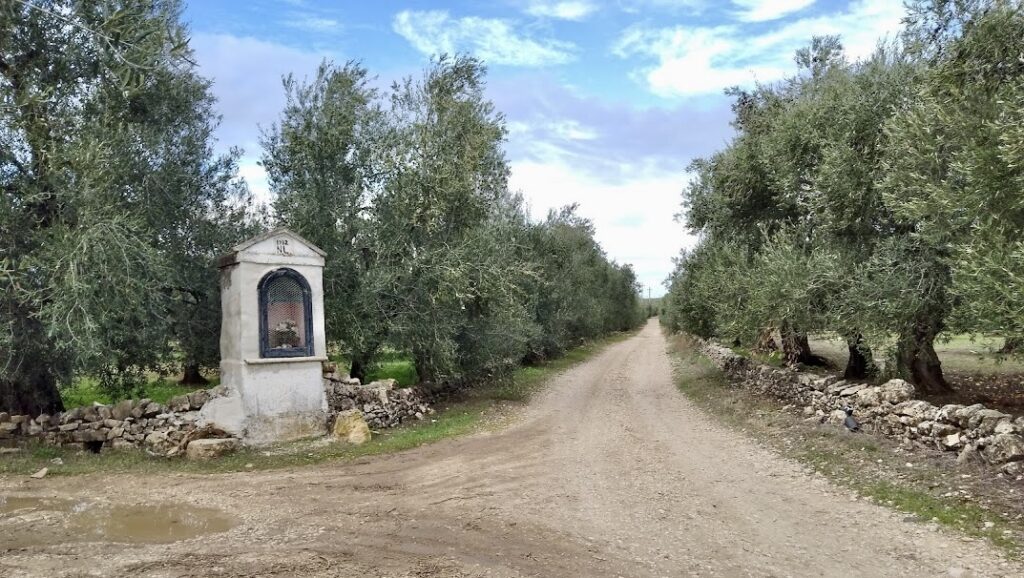Life and Death of Olive Trees
Along the Via Francigena, an Ancient Pilgrimage Route in Puglia, Italy
The Via Francigena is an ancient pilgrimage route that traverses all of Italy from north to south, the remaining 45 stages being at the southern tip of the peninsula in Puglia, the region I call home. In the autumn of 2023 I walked nine of those stages, documenting the drastic changes of landscape and society happening due to xylella fastidiosa (xylella),an incurable disease killing the olive trees.
Xylella arrived in 2013 and now one-third of the region’s olive trees, around 20 million, have already died or become infected. Many of the trees are over 2000 years old, and despite their gnarled and twisted trunks, were still productive, having been cared for continuously as long as history has been recorded before the arrival of xyllela. I wanted to meet those whose lives are intertwined with the olive tree and sketch and share their stories.
I am an olive farmer myself. After finishing my own family’s harvest, I crossed the region mimicking the way of the disease, moving from south to north. I broke my nine stages into three parts, or zones: Part 1 is the Infected Zone, where the disease was first discovered and where most of the trees have already died. The second part is the Transition Zone, where most trees are infected but not yet dead. It is also where my home is. Part 3 is the Zone Not Yet Affected, where the trees and economy are still normal and healthy but, as there is still no known cure, the arrival of xylella, and therefore death of the olive trees, is imminent.
I used my sketchbook as a recording tool, documenting not only the obvious state of the olive trees but what people were doing on the land. It was also an excuse to approach people I would be otherwise shy to ask questions to. As an American, Italian is my second language, and I don’t understand local dialects, but drawing is a universal language! Being a type of traveling reporter I used my sketchbook to share stories of what I had seen in other areas.
My race was against nightfall, so I had to choose my subjects and scenes wisely. I kept a daily diary recording stories and a count of the people I encountered and saw working with olive trees. One of my favorite experiences was sketching a family harvesting and sharing focaccia with them afterwards. The next day they sent me a news article with pictures they had taken, I had made the local paper!
I used a 4-page accordion spread per day, feeling the format reflected the movement and momentum of walking and allowed for a story, or theme to unfold. Additionally, daily I would choose a tree that best depicted the state of the trees I had seen that day and draw it in twig and ink, the twig being taken from the tree.
Through the slow, methodical pace of walking I was able to absorb and observe deeply the unimaginable change that’s happening in the region. By interviewing and recording people’s stories, memories, and altered future plans I sought to convey the meaning and importance of these trees for the people of the area, highlighting the synergistic relationship between human and olive tree that has endured, largely unchanged for millennia.
分享
Recent Posts
Volunteer Opportunity: Urban Sketchers Seeks Fundraising Director
HOME Are you passionate about art and fostering a global artistic community?...
阅读更多The USk Regional Events Grant Funding Programme 2024 / 2025
Season three of the USk Regional Events Grant Funding Programme is...
阅读更多





















